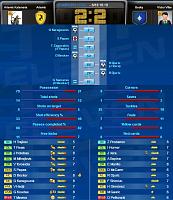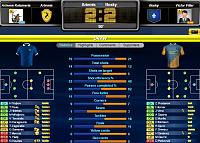I was trying to give a % (in intuition mode, nothing proved, just maybe I remember the matches during all these 32 seasons and is a estimate...)
These are my numbers:
8% win bonus
12% good substitution
12% work of testing, man in corners/fouls
15% formation
18% to attend
35% Quality (in same League level terms) counting that if, one team have a initial 11 of +3 stars one have the 0% and other the 35% to do it in some proportion/scale effects....
Maybe we can to add too...
initial orders? change orders in live match? search Key player added in the work of testing?
What is important to manage for you? feel free to give your viewpoint
What do you think? after play some seasons of T11, how affects every section/decision?


 24Likes
24Likes LinkBack URL
LinkBack URL About LinkBacks
About LinkBacks


 Reply With Quote
Reply With Quote

 and pay to win has become to dominante
and pay to win has become to dominante FireCats is testing level - 36 -
FireCats is testing level - 36 - )
) ) Because having a Good FK taker and CK taker is definately an advantage.
) Because having a Good FK taker and CK taker is definately an advantage.




